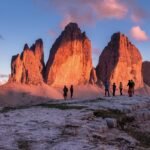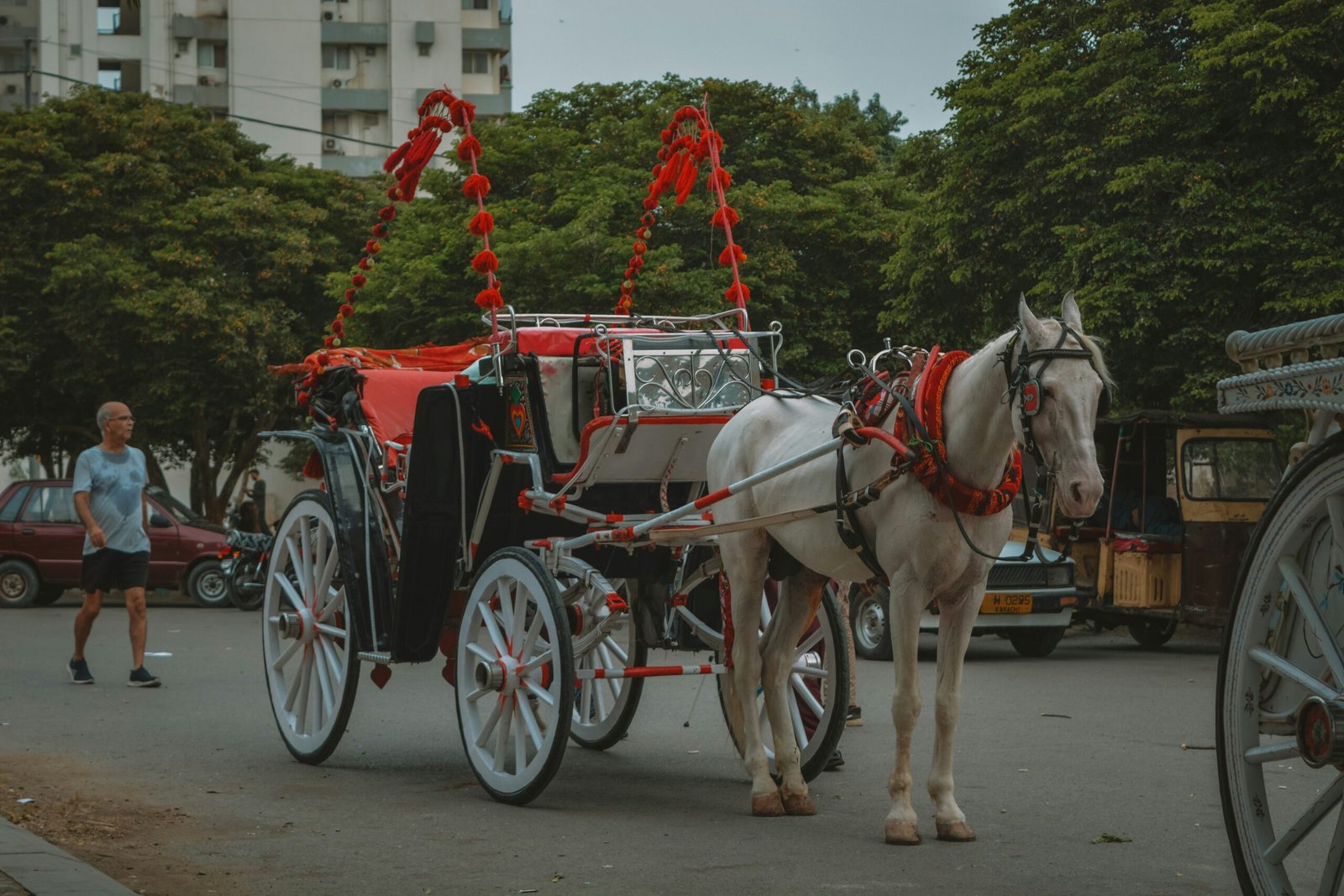Jharkhand
Nature’s Untamed Playground
HIGHLIGHT
Jharkhand, known for its stunning waterfalls, lush forests, and vibrant tribal culture, offers travelers a rich blend of natural beauty and cultural heritage.
Scotland
Unraveling Legends in the Highlands and Islands
Jharkhand is a nature lover’s paradise with its unexplored forests, cascading waterfalls, and rich tribal heritage, offering unique experiences for all types of travelers.
Jharkhand, often called the "Land of Forests," is a state known for its rugged landscapes, dense forests, and vibrant tribal culture. Rich in natural resources, the state offers some of the most breathtaking waterfalls, hills, and wildlife sanctuaries in India. With its cultural roots deeply tied to its indigenous tribes and religious landmarks like Deoghar and Parasnath Hill, Jharkhand provides a unique mix of adventure, spirituality, and heritage. Whether you’re seeking to explore its wildlife, trek through its scenic landscapes, or connect with its ancient traditions, Jharkhand is a destination full of surprises.
History
The history of Jharkhand is closely linked to its indigenous tribes, who have lived in this region for thousands of years. The area was ruled by several ancient kingdoms, including the Magadha and Maurya empires. However, Jharkhand remained relatively autonomous, with its tribal chiefs governing the land for centuries. In the medieval period, the region came under the influence of the Mughals and later the British, who exploited its rich mineral resources. After India’s independence, Jharkhand was part of Bihar until it became a separate state in 2000. Today, the state is known for its rich tribal culture, forested landscapes, and abundant natural resources.
Points of Interest
Betla National Park (Palamu):
One of India’s earliest tiger reserves, Betla National Park is known for its diverse wildlife, including tigers, elephants, leopards, and various species of deer. The park’s lush greenery, waterfalls, and ancient forts make it a perfect destination for nature lovers and wildlife enthusiasts.
Dassam Falls:
Located near Ranchi, the Dassam Falls is a spectacular waterfall that plunges from a height of 144 feet. The falls are surrounded by dense forests and rocky terrain, offering a peaceful yet adventurous setting for picnics and treks.
Hundru Falls:
Another popular waterfall near Ranchi, the Hundru Falls drops from a height of 322 feet and is one of the highest waterfalls in Jharkhand. It is an ideal spot for photography, trekking, and picnicking, especially during the monsoon season when the falls are at their most majestic.
Deoghar (Baidyanath Dham):
One of the most sacred pilgrimage sites in India, Deoghar is home to the famous Baidyanath Temple, one of the 12 Jyotirlingas dedicated to Lord Shiva. The town attracts millions of pilgrims every year, especially during the Shravan month (July-August).
Parasnath Hill:
The highest peak in Jharkhand, Parasnath Hill is a major pilgrimage site for Jains. The hill is home to several Jain temples and is associated with the attainment of Nirvana by several Jain Tirthankaras. The trek to the hilltop offers scenic views and spiritual peace.
Netarhat (The Queen of Chotanagpur):
A picturesque hill station, Netarhat is known for its cool climate, pine forests, and stunning sunrise and sunset views. Popular among nature lovers and photographers, Netarhat offers a peaceful retreat away from the hustle and bustle of city life.
Jonha Falls:
Also known as Gautamdhara, Jonha Falls is located about 40 km from Ranchi and offers a serene getaway with its cascading waters and surrounding natural beauty. The area is perfect for trekking and nature walks.
Ranchi (The City of Waterfalls):
Jharkhand’s capital, Ranchi, is often called the “City of Waterfalls” due to its proximity to several stunning waterfalls like Dassam Falls, Hundru Falls, and Jonha Falls. Ranchi also has historical and cultural sites like the Tagore Hill, Ranchi Lake, and Jagannath Temple.
Patratu Valley:
Located near Ranchi, Patratu Valley offers breathtaking views of lush green hills, meandering rivers, and winding roads. The scenic drive through the valley is popular with nature lovers and those seeking an offbeat destination in Jharkhand.
Culture and Festivals
Jharkhand’s culture is deeply rooted in its tribal heritage, with over 30 indigenous tribes living in the state. These tribes have preserved their unique customs, traditions, and art forms, which are a central part of Jharkhand’s cultural identity. Folk dances like Chhau and Paika, traditional music, and tribal crafts such as Dokra metalwork and Paitkar paintings are integral to the state’s cultural fabric. Festivals in Jharkhand offer a glimpse into its vibrant traditions and community spirit:
Sarhul Festival:
Celebrated by the Oraon, Munda, and Ho tribes, Sarhul marks the arrival of the spring season and is dedicated to the worship of trees and nature. The festival is celebrated with folk dances, music, and feasting.Karma Festival:
The Karma Festival is another significant tribal celebration, symbolizing the worship of the Karam tree, which represents fertility and prosperity. People gather under the tree to perform traditional rituals, songs, and dances.Tusu Parab:
Celebrated during the harvest season, Tusu Parab is a vibrant festival marked by colorful processions, songs, and folk dances, particularly in the southern part of Jharkhand.Baidyanath Shravan Mela (Deoghar):
One of the largest religious gatherings in Jharkhand, the Shravan Mela in Deoghar attracts millions of devotees who come to worship at the Baidyanath Temple during the Shravan month. The festival is marked by devotion, rituals, and vibrant cultural performances.Chhau Dance Festival (Seraikela):
The Chhau Dance Festival is a celebration of Jharkhand’s unique tribal dance form, Chhau, which combines martial arts, storytelling, and elaborate costumes. The festival showcases spectacular performances that reflect the state’s rich folk traditions.
What's the weather like?
When to visit Jharkhand
The best time to visit Jharkhand is during the winter months, from October to March, when the weather is pleasant and ideal for sightseeing and outdoor activities. The monsoon season (June to September) is also a good time to visit if you want to see the waterfalls at their fullest. Summers (April to June) can be hot and are best avoided unless visiting hill stations like Netarhat.
10
°C
60
MM
15
°C
80
MM
Spring
March to May
Summer
June to August
10
°C
100
MM
4
°C
90
MM
Autumn
September to November
Winter
December to February
Spring
March to May
Summer
June to August
Autumn
September to November
Winter
December to February
Example Trips
Book Your Tour
Browse our example trips and get in contact to start planning your very own adventure.
Escape the Ordinary
Our Stories
"Memories of a Lifetime"
Thanks to Hidden Journeys, we discovered parts of India we didn’t even know existed. Their knowledge of local culture and hidden gems made this the trip of a lifetime. Can’t wait for our next adventure with them!

Lita from Japan
"Tailored Perfection!"
Our travel agent listened attentively to our preferences and crafted a bespoke itinerary that exceeded our wildest dreams. From securing coveted reservations to arranging private tours, they went above and beyond to ensure our satisfaction. Thanks to their dedication and expertise, we enjoyed a seamless and truly unforgettable journey. We can't wait to plan our next adventure with them!

flombergdeb from USA
CEOApple"A Dream Destination Wedding Come True"
Hidden Journeys planned our destination wedding in Rajasthan, and it was beyond magical. From the intricately planned ceremonies to the breathtaking venues, everything was flawless. Our guests still rave about the experience!

Mercel
Travel Safely with Hidden Journeys
Proudly Recognized by the Ministry of Tourism
At Hidden Journeys, your safety and memorable travel experiences are our top priorities. Proudly recognized by the Ministry of Tourism and affiliated with esteemed organizations such as ADTOI (Association of Domestic Tour Operators of India) and IOTA (Indian Outbound Travel Association), we ensure that every journey is crafted to the highest standards of quality and trust. With over 20 years of expertise in curating authentic, immersive travel experiences across India, we’re here to show you the unseen side of India with the utmost care and dedication. Travel with confidence and explore India like never before – only with Hidden Journeys.

As Seen In






Your Bespoke & Luxury Travel partner. Discover unseen of India.


